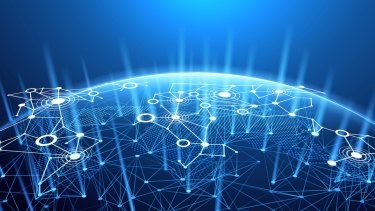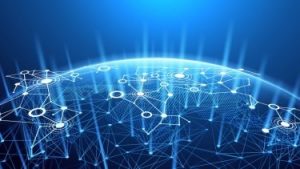By Troy Fowler
It seems like every day we see another public figure elect to take some or all of their compensation in Bitcoin. I consider their incentive for doing so, and how such compensation is treated from an income tax standpoint.
Bitcoin is Insulated From the Causes of Inflation
The US Dollar lacks the purchasing power it had a year ago. Inflation has soared to its highest levels since 1990.[1] The average price of non-volatile consumer goods (consumer price index) rose 6.2 percent for the 12 months ending in October 2021.[2] The energy index rose 30 percent over that same period as the food index increased 5.3 percent.[3] While private industry workers have seen an average pay raise of 4.2 percent over the past year, the raise that many have received does not fully account for increases in the price of goods.[4]
Multiple federal “stimulus” packages amounting to a staggering $6 trillion in new spending purported to put more money into Americans’ pockets,[5] but the combination of artificially increased demand and reduced supply has led to shortages which have caused consumer prices to skyrocket.[6] To preserve the otherwise shrinking value of their hard-earned dollars, many Americans have looked to Bitcoin as a hedge against inflation. In October, JPMorgan published a research note to its clients stating that “Institutional Investors appear to be returning to bitcoin perhaps seeing it as a better inflation hedge than gold.”[7]
As opposed to the dollar which is a “fiat” currency backed by government rather than a physical commodity or financial instrument,[8] and which can be printed infinitely as the Federal Reserve sees fit, new Bitcoins are introduced into circulation in a manner analogous to gold miners expending resources to add gold to circulation.[9] In the case of Bitcoin, it is CPU time and electricity that is expended.[10] The “hard cap” on the supply of Bitcoin is a fundamental driver behind Bitcoin’s value proposition such that, although a (theoretically possible) change in the hard cap “would increase miner revenue in bitcoin terms, the loss of faith in the Bitcoin network would result in a catastrophic and irreversible price collapse, leading to a net loss of miner revenue in fiat terms.”[11] The finite number of Bitcoins that can ever come into existence ensures that once the hard cap is reached, Bitcoin can exist inflation-free.[12]
Many public figures have begun to request payment in Bitcoin as an alternative to the inflated US Dollar.[13] The newly elected Mayor of New York, Eric Adams, announced that he will receive his first three paychecks in Bitcoin.[14] Various professional athletes have also begun to take their salaries, signing bonuses, and endorsement earnings in the world’s number one cryptocurrency.[15] On 12/29/2020, when NFL offensive lineman Russell Okung tweeted that $6.5M—half of his $13M salary—had been “paid in Bitcoin,”[16] the price of the cryptocurrency was around $26,000 per coin.[17] Mr. Okung’s $6.5M investment at $26,000 per coin has increased to a value of $15M at the current price just north of $60,000—a 130% gain.
Tax Treatment of Bitcoin
Typically, compensation for services constitutes gross income which is taxable at “ordinary” rates.[18] However, the IRS treats cryptocurrencies like Bitcoin as property for federal tax purposes.[19] Property is a capital asset,[20] and capital assets are taxable at much lower rates.[21] Capital assets tend to be investment property upon which gains are only supposed to occur in the relatively unusual event that such property is sold. In tax law, no dollar can be taxed until its value has been “realized,” which requires an undeniable accession to wealth.[22]
All income is taxed at ordinary rates unless there is a net capital gain.[23] If a capital asset held for more than one year is sold at a gain (long-term capital gain) and said gain is greater than the amount lost from the sale or exchange of other capital assets held for less than a year (short-term capital loss), the taxpayer has a net capital gain which should be taxed according to capital, as opposed to ordinary, rates.[24] While the highest marginal tax rate (rate at which the last dollar of income is taxed) for ordinary income is 37%, the highest marginal tax rate for capital gains is just 20%.[25] If a taxpayer can hold off on liquidating a capital asset for more than a year, they can take advantage of substantial tax savings.[26]
Let’s assume a taxpayer is able to hold onto their Bitcoin for longer than a year. It is no secret that the price of Bitcoin is volatile, but on an upward trajectory.[27] To determine whether the taxpayer has realized a gain or loss upon their sale of Bitcoin, the tax code considers the original cost to the taxpayer.[28] This cost (called “basis”) is subtracted from any amount realized from a sale to determine whether there is gain or loss.[29] When an employee is paid in Bitcoin, they receive basis of the Fair Market Value (“FMV”) of Bitcoin at the time of the transfer.[30]
When compensation is paid on a fixed schedule, the taxpayer’s basis for each receipt of Bitcoin is different, since its FMV was different each time they received payment. Because they will be taxed on the difference between the FMV at liquidation and their basis in that particular receipt,[31] it follows that they should sell the highest basis portions of Bitcoin first. This would result in the lowest possible tax liability. Portions with lower basis should either be held until the price drops, or until the price increases so much that the tax hit is negligible compared to the substantial gain.
Popular investing apps like Robinhood do not allow users to determine which specific unit they want to sell.[32] Rather, Robinhood sells your funds in first-in-first-out (“FIFO”) order.[33] Assuming the asset has increased in value, the lowest basis holdings will be sold first, resulting in a higher tax liability since (taxable) gain equals amount realized minus basis. A person receiving compensation in Bitcoin should make sure their broker of choice does not impose this limitation.
The IRS has stated that a taxpayer may choose which units they wish to sell if they can specifically identify which unit or units are involved in the transaction and substantiate their basis in those units.[34] The taxpayer must provide records detailing the transaction information for all units of Bitcoin they hold in a single account, wallet, or address.[35] These records must include: (1) the date and time each unit was acquired, (2) the basis and the fair market value of each unit at the time it was acquired, (3) the date and time each unit was sold, exchanged, or disposed of, and (4), the fair market value of each unit when sold, exchanged, or disposed of, and the amount of money or the value of property received for each unit.[36] If a taxpayer fails to specify or is otherwise unable to do so, the units will be deemed to be sold in chronological (FIFO) order.[37]
Conclusion
Capital treatment is reserved for assets that are held for more than one year, the disposal of which constitutes an uncommon occurrence. The IRS treats Bitcoin as property, which is a capital asset taxed at capital rates, so long as it is held for more than one year and the taxpayer’s net long-term capital gains exceed their net short-term capital losses. Because the code taxes capital income at a rate much lower than ordinary income, it is in the taxpayer’s best interest to hold onto Bitcoin for more than one year before selling.
When Bitcoin held for less than one year is liquidated, it is subject to the same tax rate as if the taxpayer had simply received compensation in cash. Therefore, a taxpayer should ensure they can cover their normal expenses with other funds before committing to receiving compensation in Bitcoin. Implicit in the choice to receive compensation in Bitcoin is the hope that its value appreciates. Regardless, the volatility of the market makes short-term investing a risky decision. Additionally, the IRS’ determination that Bitcoin is property, and thus a capital asset, indicates that it believes Bitcoin should be held for investment purposes rather than used as a cash equivalent for compensation. Because Bitcoin is viewed as a store of value, immune from inflationary weakening, it makes sense to hold the asset for as long as possible while the price increases. This cannot be achieved if the taxpayer is forced to liquidate their holdings to cover their expenses.
At this point in time, it might make sense for high income earners like professional athletes to receive compensation in Bitcoin. However, for the majority of Americans who depend on their paychecks to cover any expenses they might incur in a given taxable year, Bitcoin is better suited for investment of discretionary income that the taxpayer wishes to protect from the pressures of inflation.
[1] Bureau of Labor Statistics, News Release USDL-21-1973, Consumer Price Index – October 2021 (Nov. 10, 2021).
[2] Id.
[3] Id.
[4] Bureau of Labor Statistics, News Release USDL-21-1907, Employment Cost Index – September 2021 (Oct. 29, 2021).
[5] Staff of the J. Econ. Comm., 117th Cong., The Economics of Inflation and the Risks of Ballooning Government Spending (Oct. 6, 2021), https://www.jec.senate.gov/public/index.cfm/republicans/2021/10/the-economics-of-inflation-and-the-risks-of-ballooning-government-spending (Rep. of Jackie Benson).
[6] Id.
[7] Kevin Helms, JPMorgan: Institutional Investors Dump Gold for Bitcoin Seeing It as Better Inflation Hedge, Bitcoin.com (Oct. 7, 2021), https://news.bitcoin.com/jpmorgan-institutional-investors-dump-gold-for-bitcoin-better-inflation-hedge/.
[8] Fiat vs. Representative Money: What’s the Difference?, Investopedia (Sept. 14, 2021), https://www.investopedia.com/ask/answers/041615/what-difference-between-fiat-money-and-representative-money.asp#:~:text=Fiat%20money%20is%20a%20form,physical%20commodity%20or%20financial%20instrument.
[9] Satoshi Nakamoto, Bitcoin: A Peer-to-Peer Electronic Cash System, Bitcoin.org 4 (Oct. 31, 2008), https://bitcoin.org/bitcoin.pdf.
[10] Id.
[11] Can Bitcoin’s Hard Cap of 21 Million Be Changed?, River Financial, https://river.com/learn/can-bitcoins-hard-cap-of-21-million-be-changed (last visited Nov. 19, 2021).
[12] See Nakamoto, supra note 9 (explaining the various economic incentives for miners to support the blockchain).
[13] Jazmin Goodwin, Forget cash. Pay me in bitcoin, CNN Business (Nov. 13, 2021), https://www.cnn.com/2021/11/13/business/money/cryptocurrency-bitcoin-salary-feseries/index.html.
[14] Id.
[15] Id.
[16] Jonathan Warner, Former Seattle Seahawk Russell Okung puts half of salary in Bitcoin, considered highest paid in the league now, NBC Sports (Feb. 22, 2021, 5:54PM ET), https://www.nbcsports.com/northwest/seahawks/former-seattle-seahawk-russell-okung-puts-half-salary-bitcoin-considered-highest.
[17] Bitcoin USD Historical Data, Yahoo Finance, https://finance.yahoo.com/quote/BTC-USD/history (last visited Nov. 19, 2021).
[18] I.R.C. §§ 1(j), 61(a)(1).
[19] I.R.S. Notice 2014-21, IRB 2014-16.
[20] I.R.C. § 1221(a).
[21] I.R.C. § 1(h).
[22] Comm’r v. Glenshaw Glass Co., 348 U.S. 426, 431 (1955).
[23] I.R.C. §§ 1(h), 1222(11).
[24] I.R.C. §§ 1(h), 1222(2), (7), & (11).
[25] I.R.C. § 1(h), (j).
[26] See id.
[27] See Bitcoin USD Historical Data, supra note 17.
[28] I.R.C. §§ 1001(a), (b), 1011, 1012.
[29] Id.
[30] Int’l Freighting Corp. v. Comm’r, 45 B.T.A. 716, 720–21 (1941).
[31] I.R.C. § 1001(a), (b).
[32] Popular Investing Apps Might Hold a Tax Surprise, WSJ Noted (Apr. 16, 2021), https://www.wsj.com/articles/popular-investing-apps-might-hold-a-tax-surprise-11618610064?mod=hp_noted_tophat.
[33] Id.
[34] Frequently Asked Questions on Virtual Currency Transactions at A39, Internal Revenue Service (June 4, 2021), https://www.irs.gov/individuals/international-taxpayers/frequently-asked-questions-on-virtual-currency-transactions.
[35] Id. at A40.
[36] Id.
[37] Id. at A41.

Image Source: https://financeillustrated.com/wp-content/uploads/2021/05/44-768×494











